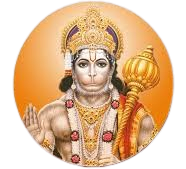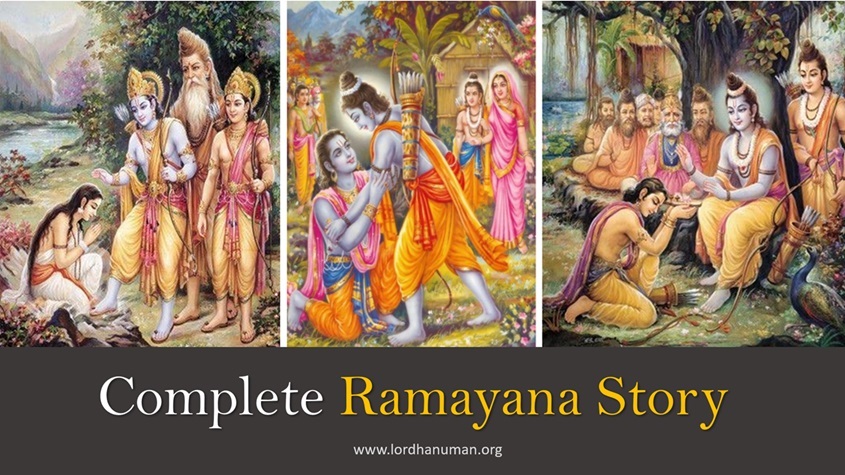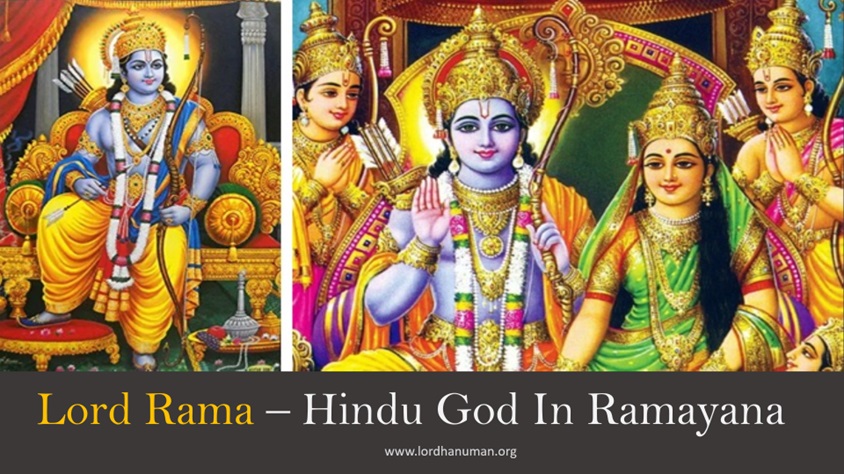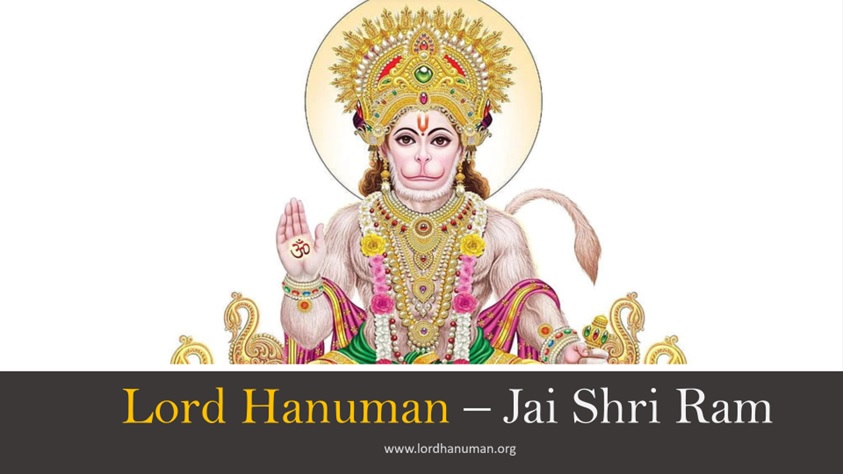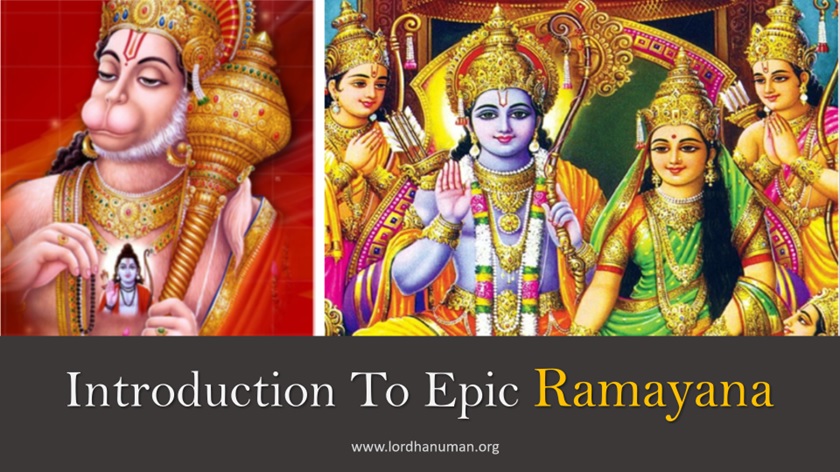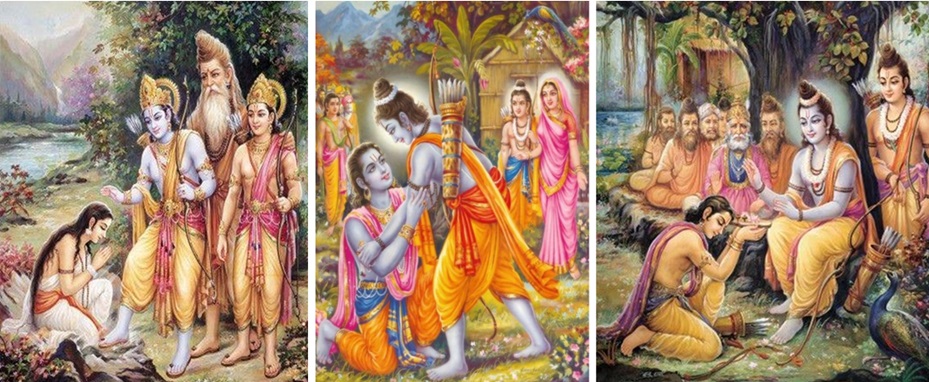
Ramayana Story
रामायण कथा
Complete Ramayana Story Events
संपूर्ण रामायण
The Ramayana story is a complete description of all major events in chronological order, as described in the epic Ramayana. It is one of the oldest and most revered Indian epics and narrates the life and adventures of Lord Rama, an incarnation of Lord Vishnu. The epic, attributed to Maharshi Valmiki, is a profound tale of virtue, dharma (righteousness), and the eternal battle between good and evil.
The Ramayana is a revered ancient Indian epic that narrates the life and adventures of Lord Rama, an incarnation of the Hindu god Vishnu. Attributed to Maharshi Valmiki, the epic is divided into seven books and consists of approximately 24,000 verses.
Lord Rama And Sita
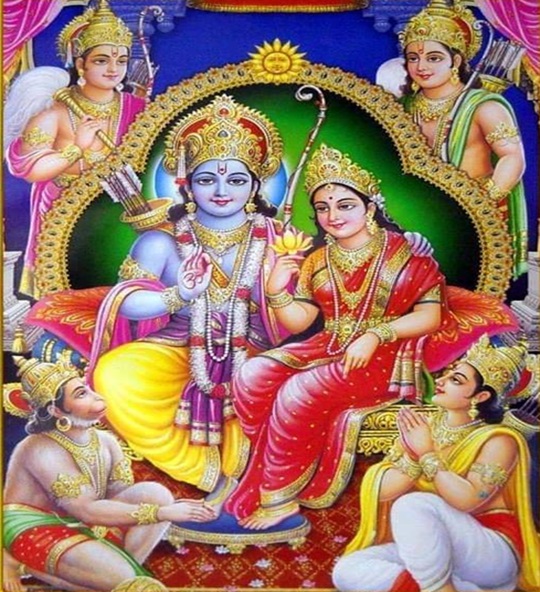
Lord Rama And Sita
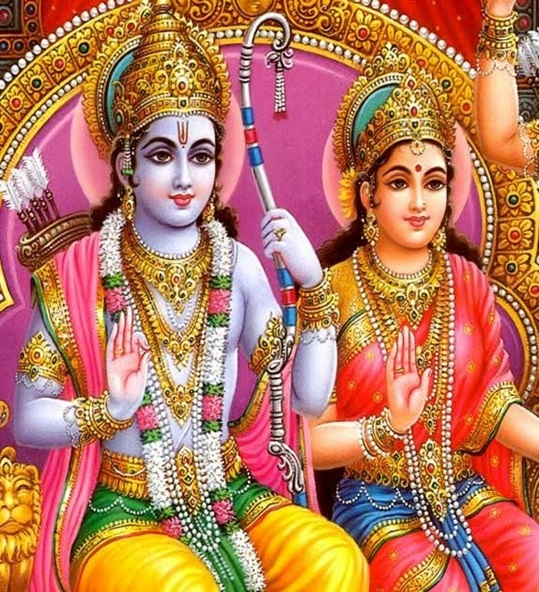
1. Rama's Birth Story And Early Life
Rama's Birth Story
The story begins with the birth of Rama, the crown prince of Ayodhya, to King Dasharatha and Queen Kaushalya. Rama’s exemplary qualities and virtues earn him the admiration of the kingdom.
King Dasharatha of Ayodhya performs a yajna to beget sons. Agni, the fire god, gives him a divine pudding that is distributed among his queens. Queen Kaushalya consumes the pudding and gives birth to Rama, the eldest son.
Birth Of Lord Rama
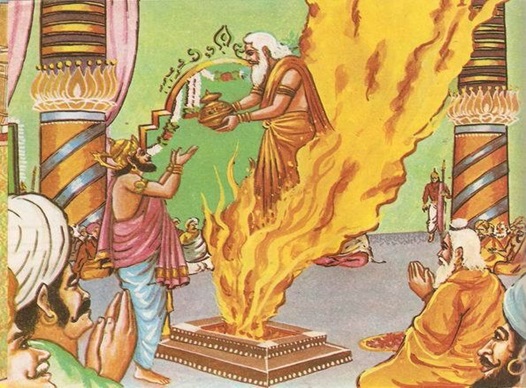
Lord Rama Gains Vidhya
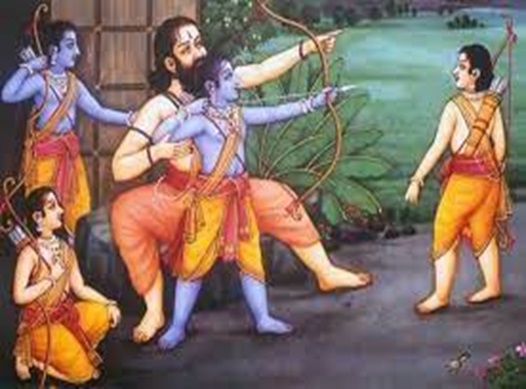
Childhood of Rama
Rama, along with his brothers Lakshmana, Bharata, and Shatrughna, receives education in various arts and sciences from Guru Vashishta. Rama’s exceptional qualities and virtues earn him admiration from everyone in Ayodhya.
Complete Ramayana Story Events
2. Rama's Marriage To Sita
Sita Swayamvara And Breaking Shiva's Bow
Sita, the princess of Mithila, organizes a swayamvara where suitors attempt to string Lord Shiva’s divine bow.
Sita’s Swayamvara, a pivotal event in the Hindu epic Ramayana, involved Princess Sita choosing her husband from worthy suitors. The challenge was to string Lord Shiva’s divine bow, an impossible task for others. As noble princes failed, Lord Rama effortlessly lifted and strung the bow, winning Sita’s hand.
Rama Brakes Shiva's Celestial Bow
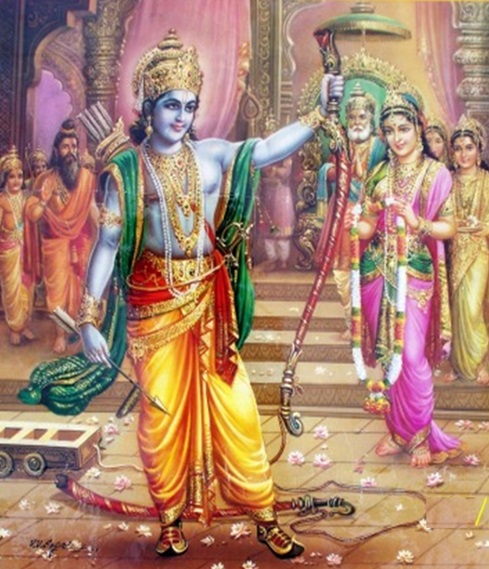
Rama Wins Sita's Swayamvara
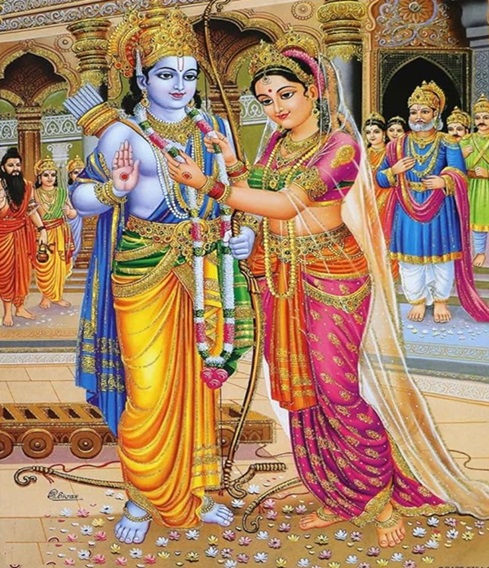
This divine union symbolizes virtue, dharma, and the triumph of righteousness, setting the stage for the epic’s unfolding events, including Rama and Sita’s sacred union and their journey through love, exile, and the ultimate battle against evil.
Rama, effortlessly stringing the bow, wins Sita‘s hand in marriage.
3. Rama's Exile And Kaikeyi's Boon
Rama’s exile in the Ramayana story unfolds when Queen Kaikeyi, influenced by her maid Manthara, demands that King Dasharatha fulfill her two boons. The first boon secures the throne for Kaikeyi’s son, Bharata, and the second mandates Rama’s exile for 14 years.
Maid Manthara Misguides Queen Kaikeyi
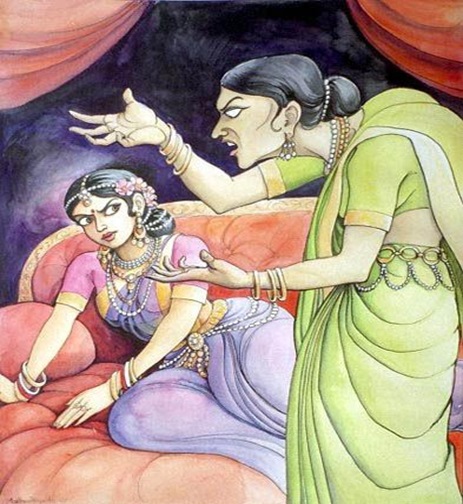
Kaikeyi Demands Dashratha Exile For Rama
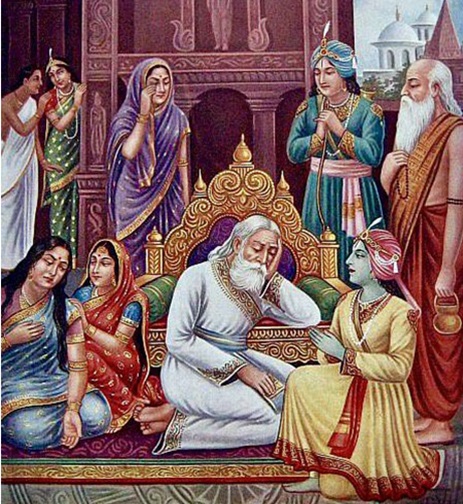
King Dasharatha concedes to Rama’s exile due to the fulfillment of two boons he had granted to Queen Kaikeyi earlier. The boons were promised as a gesture of gratitude for her previous service to him in the battle against the demons.
- Boon for Bharata’s Ascension:
Kaikeyi’s first boon was that her son Bharata would be crowned as the king of Ayodhya. Dasharatha, bound by his promise, granted this boon, ensuring Bharata’s future rule.
2. Boon for Rama’s Exile:
The second boon Kaikeyi requested was the exile of Rama for 14 years. Despite being heartbroken and not wanting Rama to leave, Dasharatha, bound by his word, had no choice but to fulfill Kaikeyi’s second request.
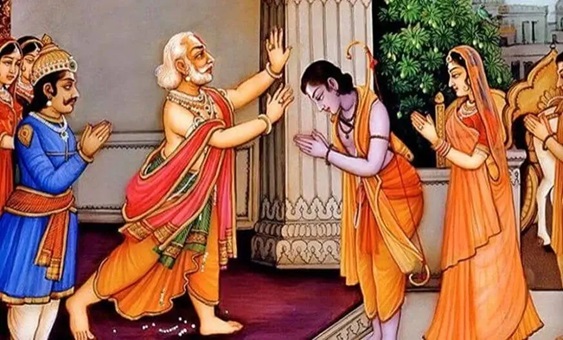
Dasharatha’s adherence to his promises and his inability to go back on the granted boons led to the tragic decision of sending Rama into exile. This event serves as a critical juncture in the Ramayana, setting the stage for Rama’s journey, his exemplary adherence to dharma, and the subsequent events that unfold during his exile.
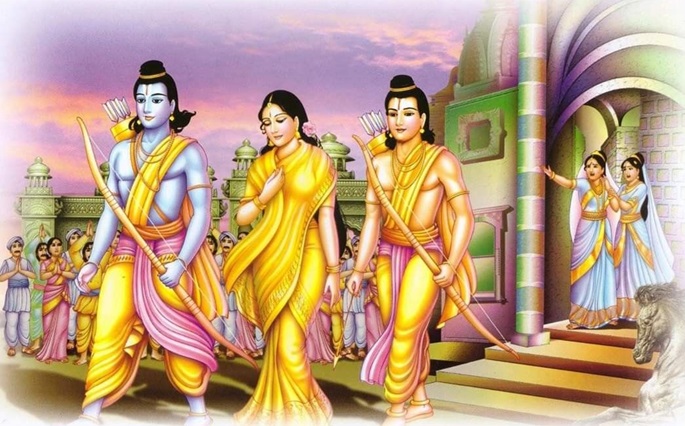
Despite Dasharatha’s anguish, Rama willingly accepts the exile to honor his father’s promise. This event serves as a crucial turning point, illustrating Rama’s unwavering commitment to dharma (righteousness) and duty.
Kaikeyi, Dasharatha’s second queen, coerced by her maid Manthara, demands Rama’s exile for 14 years. Rama willingly accepts exile to honor his father’s promise.
Complete Ramayana Story Events
Curse To King Dasharatha
The curse on King Dasharatha is a significant event in the Hindu epic Ramayana. It is associated with the circumstances leading to Lord Rama’s exile. The curse is a consequence of an incident involving a sage named Shravan Kumar.
Ramayana Shravan Kumar Story
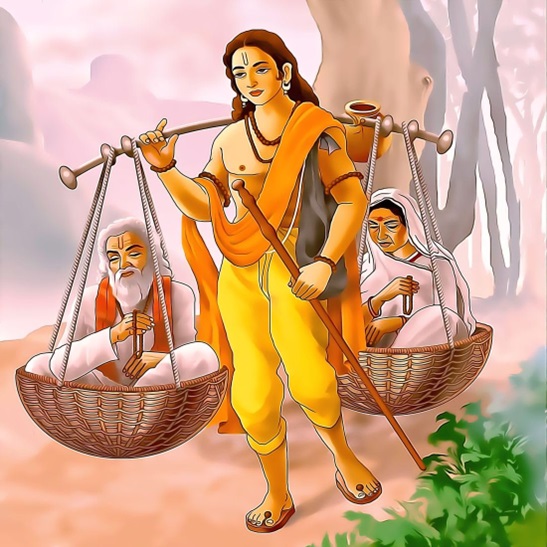
Shravan Kumar Curse
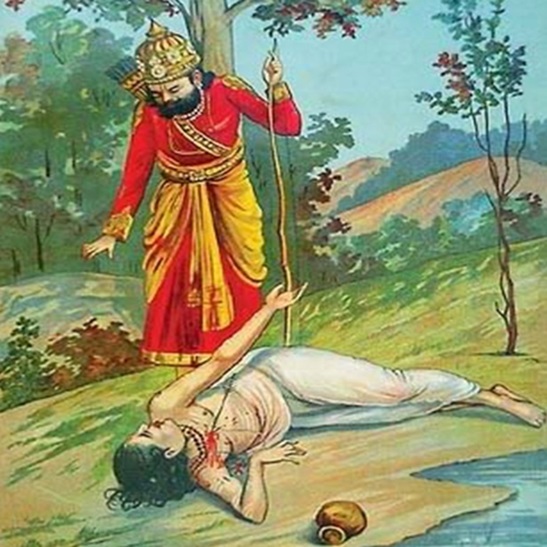
The curse, although unintentional on Dasharatha’s part, becomes a tragic element in the larger narrative of the Ramayana. It underscores the interconnectedness of actions and their consequences, shaping the destiny of characters in the epic. The pain of separation endured by Dasharatha mirrors the earlier sorrow caused by Shravan Kumar’s tragic death.
Read More
Curse To King Dasharatha
4. Rama's Departure For Exile
Despite Dasharatha’s agony and pleas to reconsider, Rama, embodying righteousness and obedience, accepts the decree. His wife Sita and loyal brother Lakshmana accompany him, illustrating their unwavering commitment to dharma.
The departure scene is emotionally charged, resonating with the grief of separation. Rama’s departure signifies sacrifice, duty, and adherence to principles, setting the stage for the unfolding epic, where he faces trials, builds alliances, and ultimately confronts the demon king Ravana to uphold righteousness.
The narrative highlights Rama’s exemplary character and becomes a timeless symbol of virtue and honor in Hindu philosophy.
Sad King Dasharatha Concedes To Rama's Exile
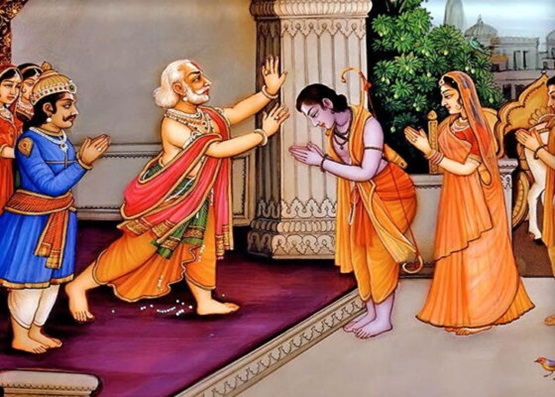
Brother Laxmana And Sita Accompany Rama To Exile
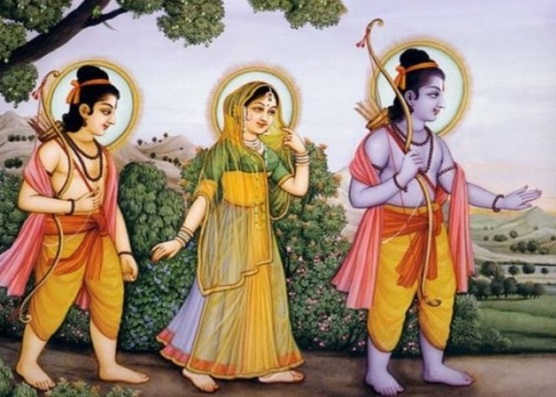
Sita And Lakshmana's Devotion
Sita and Lakshmana accompany Rama into the Dandakaranya forest during his exile. The trio encounters various sages, demons, and celestial beings during their forest sojourn.
The decision of Sita and Lakshmana to accompany Lord Rama into exile exemplifies unparalleled devotion and unwavering commitment to righteousness in the Hindu epic Ramayana.
When Rama is unjustly compelled into a 14-year exile due to Queen Kaikeyi’s demands, Sita, his devoted wife, insists on sharing the hardships of the forest with him. Her steadfastness and loyalty mirror the essence of the sacred bond between husband and wife in Hindu philosophy.
Vanvaas Marg
Rama's Exile Route Map
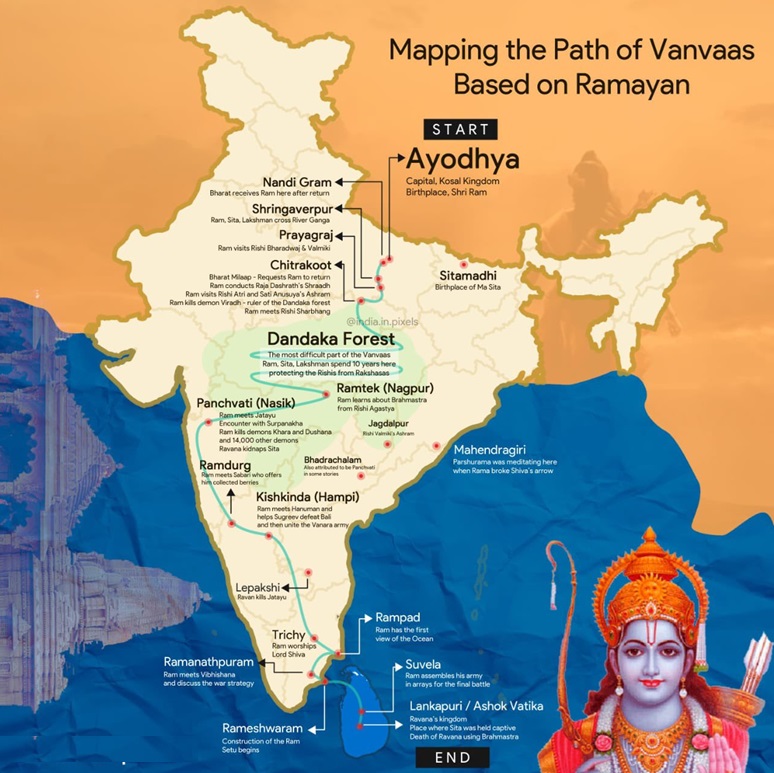
Similarly, Lakshmana, Rama’s loyal brother, deems it his duty to serve and protect Rama during the exile. Driven by deep fraternal love and unyielding loyalty, Lakshmana voluntarily chooses to share in Rama’s hardships, exemplifying the ideals of dharma and familial devotion.
Their decisions reflect a profound commitment to dharma, selfless sacrifice, and a willingness to endure the challenges of the forest. Sita’s and Lakshmana’s devotion to Rama becomes a central theme in the Ramayana, symbolizing the virtues of duty, loyalty, and familial bonds. Their unwavering support and sacrifice contribute to the epic’s moral fabric, showcasing the enduring ideals of righteousness and selflessness.
Rama Accompanied BY Wife Sita And Brother Lakshmana Depart For Exile
In the epic Ramayana, the exile of Lord Rama is a pivotal episode that sees not only Rama but also his devoted wife Sita and loyal brother Lakshmana accompanying him. The trio’s journey into exile is a poignant demonstration of familial unity, sacrifice, and unwavering devotion.
When Rama, the rightful heir to the throne of Ayodhya, is unjustly sent into exile for fourteen years, Sita and Lakshmana, exemplifying the ideals of dharma (righteousness) and loyalty, choose to stand by his side. Sita, known for her unwavering devotion to Rama, insists on accompanying him, demonstrating her commitment and love.
Kevat Story in Ramayana
In the epic Ramayana, the story of Kevat is a poignant tale of devotion and humility. Kevat, a humble boatman by profession, resided on the banks of the river Ganga. One day, Lord Rama, along with his wife Sita and brother Lakshmana, arrived at the riverbank during their exile. They sought passage across the river to continue their journey.
Lord Rama, recognizing Kevat’s pure heart and sincere devotion, assured him that his boat would become sanctified by their presence. With deep humility and reverence, Kevat accepted Lord Rama’s words and proceeded to ferry them across the river.
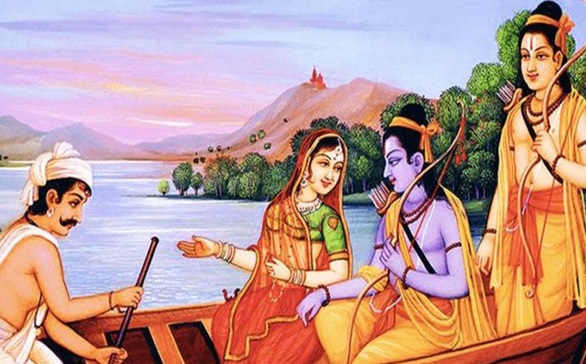
Upon reaching the opposite shore, Kevat was filled with gratitude and joy. Lord Rama, true to his word, granted Kevat’s wish by transforming his worn-out boat into a beautiful celestial vessel. Overwhelmed with emotion, Kevat bowed at Lord Rama’s feet, his heart brimming with love and devotion.
The story of Kevat serves as a timeless reminder of the power of humility, devotion, and selfless service in the eyes of the divine. Kevat’s unwavering faith and humble demeanor earned him the blessings of Lord Rama, demonstrating that true devotion transcends barriers of social status and worldly distinctions.
Bharat's Devotion
After Lord Rama’s exile, Bharata, Rama’s younger brother, ruled Ayodhya as a virtuous regent. He placed Rama’s sandals on the throne, signifying his devotion and commitment to his elder brother’s rightful rule.
Bharata governed with righteousness and upheld dharma, ensuring the welfare of the kingdom. His primary focus was to preserve the throne for Rama’s return. Bharata’s noble governance and steadfast adherence to Rama’s principles became a testament to familial duty and righteousness during the period of Rama’s exile.
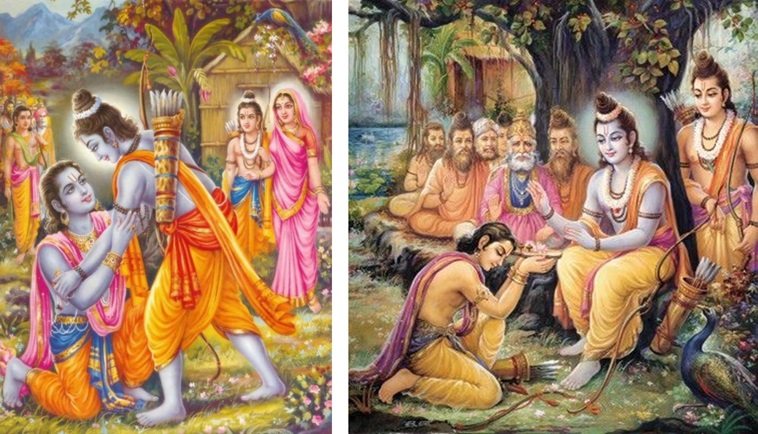
Complete Ramayana Story Events
5. Golden Deer And Sita's Abduction
The episode of the golden deer and Sita’s abduction is a pivotal moment in the Hindu epic Ramayana. Influenced by the demoness Surpanakha, Ravana, the demon king of Lanka, devises a cunning plan to abduct Sita, the wife of Lord Rama.
The abduction of Sita by Ravana and the concept of the “Lakshmana Rekha” are significant events in the Hindu epic Ramayana.
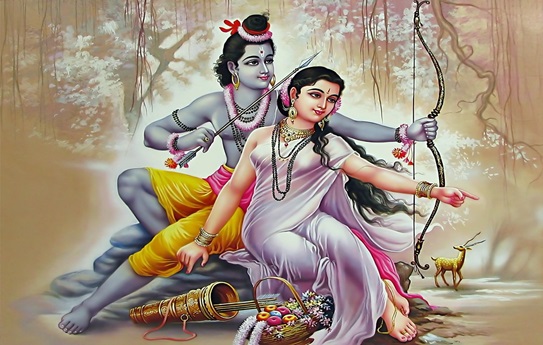
Golden Deer's Illusion
Ravana, aware of Sita’s beauty, sends Maricha, a demon in the guise of a golden deer, to entice her. The deer captivates Sita with its enchanting appearance.
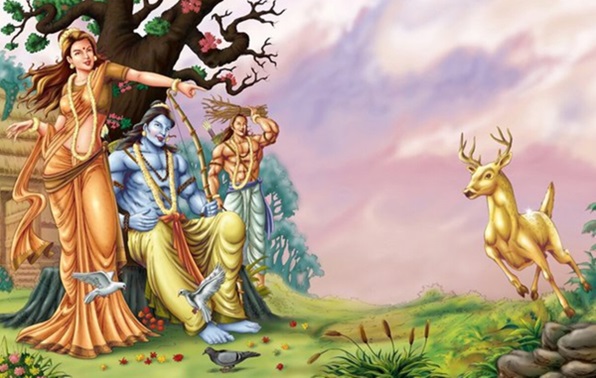
Golden Deer's Pursuit By Rama
Sita, charmed by the golden deer, urges Rama to capture it for her. Despite Lakshmana’s reservations about the deer’s authenticity, Rama leaves Sita under Lakshmana’s protection and sets out to catch the deer.
Lakshmana Rekha
Before leaving, Rama instructs Lakshmana to protect Sita during his absence. Lakshmana draws a protective line, the “Lakshman Rekha”, around their dwelling in Panchavati.
He advises Sita not to cross the line, assuring her safety within the boundary. The line is meant to act as a protective barrier against any potential threat.
Lakshmana Draw's Lakshman Rekha
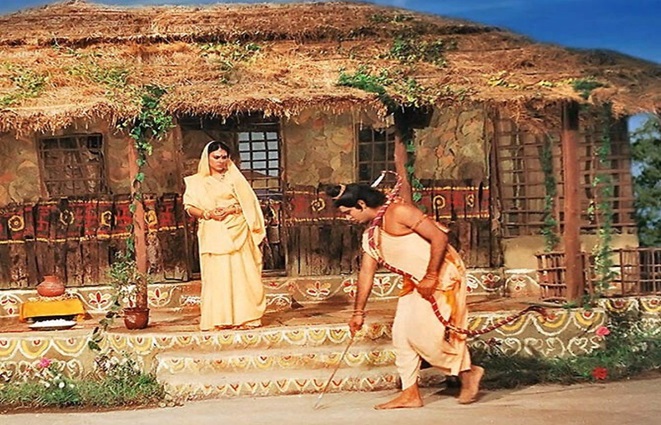
The Lakshmana Rekha, while a symbol of Lakshmana’s protective devotion, also serves as a tragic reminder of the consequences of Sita’s decision to cross the line, contributing to the unfolding drama of the Ramayana.
Complete Ramayana Story Events
6. Sita's Abduction By Ravana
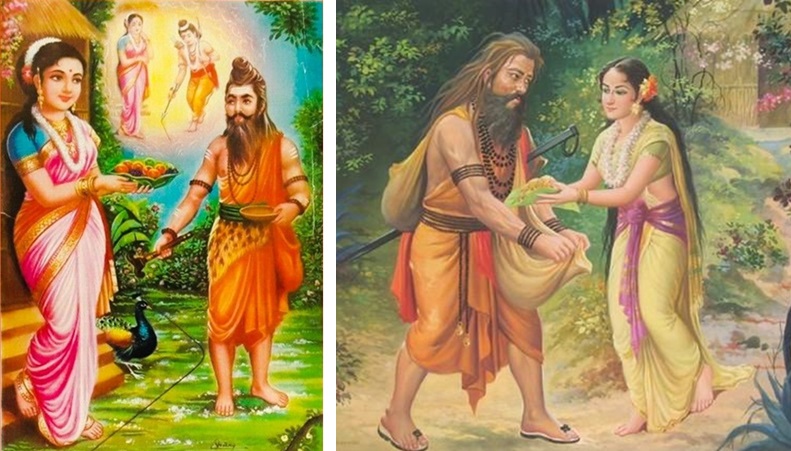
Seizing the opportunity, Ravana reveals his true form and kidnaps Sita while Rama is away. Sita, recognizing the danger, calls out to Lakshmana for help, leaving behind a piece of her jewelry (Chudamani) as a clue.
Taking advantage of Rama’s absence, Ravana reveals his true form and forcibly carries Sita away to Lanka in his celestial chariot, the Pushpaka Vimana.
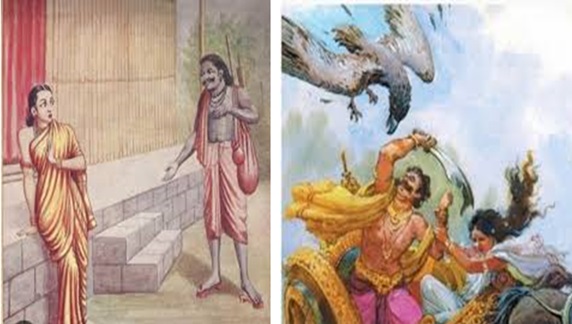
Complete Ramayana Story Events
Jatayu Confronts Ravana
In the Ramayana, the story of Jatayu unfolds as a poignant and valiant episode. Jatayu, a mighty eagle and a dear friend of King Dasharatha, encounters Lord Rama and Lakshmana during their search for Sita in the forest. While in the Dandakaranya forest, Jatayu witnesses the abduction of Sita by the demon king Ravana.
Filled with righteous fury, Jatayu confronts Ravana in a heroic attempt to rescue Sita. A fierce battle ensues, and Jatayu, despite putting up a valiant fight, is ultimately overpowered by Ravana. Severely wounded and with his wings clipped, Jatayu falls to the ground.
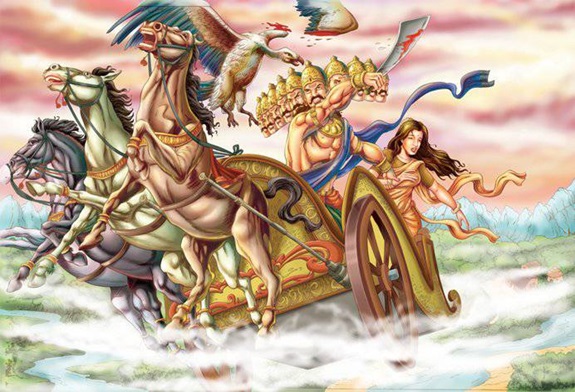
When Rama and Lakshmana reach the scene, they find the wounded Jatayu. In his last moments, Jatayu provides crucial information about Sita’s abduction, pointing them in the direction taken by Ravana.
Jatayu’s selfless sacrifice and courageous attempt to protect Sita showcase the noble qualities of loyalty, valor, and sacrifice. Rama, deeply moved by Jatayu’s sacrifice, honors him for his devotion and service. The episode of Jatayu remains a poignant chapter in the Ramayana, symbolizing the noble struggle against evil and the importance of selfless devotion in the face of adversity.
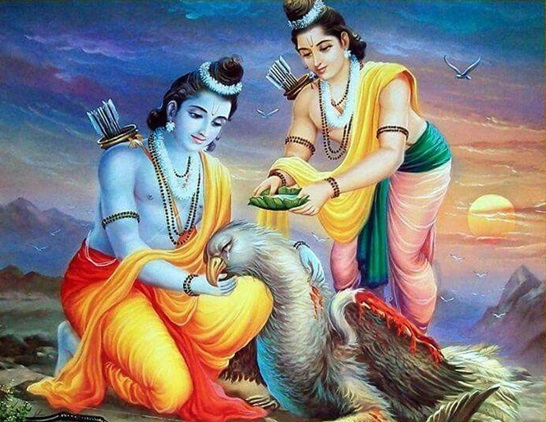
7. Rama's Search for Sita
After Sita’s abduction by Ravana, Lord Rama meticulously planned his mission to rescue Sita. Rama started his mission by linking various pieces of evidence left behind during Sita’s abduction by Ravana. Rama also started seeking help and guidance from the Sages and collecting information from other people staying in the forest.
Fuelled by love and determination, Rama strategized with the monkey king Sugriva, forming an alliance, and promising to assist in reclaiming his kingdom. Hanuman, a devoted warrior, played a pivotal role in this mission, journeying to Lanka in search of Sita.
Rama’s methodical approach, coupled with unwavering devotion, set the stage for the epic battle against Ravana and the eventual reunion with Sita in the Ramayana.
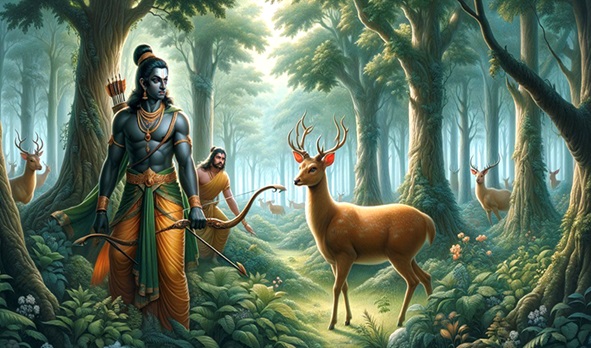
Shabari Advised Rama To Meet Sugriva
In the Ramayana, Shabari’s story is one of profound devotion and purity. Shabari, an elderly ascetic woman of the Bhil tribe, lived in the forest, awaiting the arrival of Lord Rama. She had received guidance from her guru, Matanga Rishi, that Rama, an incarnation of Lord Vishnu, would visit her.
Shabari, over the years, meticulously prepared herself for Rama’s arrival. Her days were spent in collecting sweet berries, tasting each one to ensure they were sweet and ripe for offering to her awaited Lord.
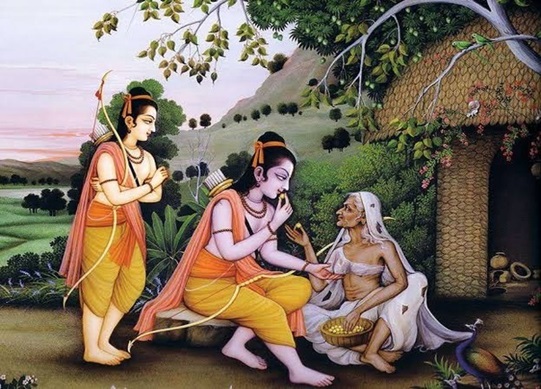
When Rama, along with Lakshmana, reached Shabari’s ashram during their search for Sita, Shabari was overjoyed. With utmost humility and devotion, she offered the sweet berries that she had tasted, considering them as a symbol of her love and devotion. Rama, touched by her sincere devotion, accepted the berries with gratitude. Mata Shabri advised Rama to seek Vanara king Sugriva’s help in his search mission for Sita.
Rama Helps Sugriva To Regain His Kingdom
Rama helped Vanara king Sugriva in reclaiming his kingdom. Rama played a crucial role in the conflict between Sugriva and Bali, demonstrating his commitment to justice and righteousness in the Ramayana. Sugriva sought Rama’s assistance to reclaim his kingdom, Kishkindha, from his elder brother, Bali.
Rama, recognizing Sugriva’s plight and the injustice meted out by Bali, agreed to help. Sugriva, backed by Rama and Lakshmana, challenged Bali to a duel. Rama’s intervention was not to take sides but to ensure fairness and adherence to dharma (righteousness).
Sugriva Seek Rama's Help
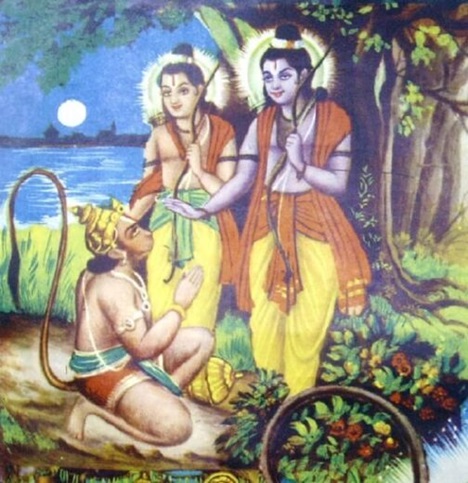
Sugriva Defeats Bali
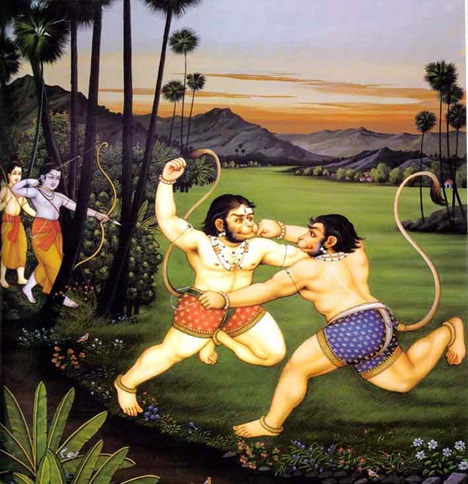
Rama Meets Vanara King Sugiva
Sugriva introduces Hanuman, his trusted minister and a formidable warrior with extraordinary powers. Hanuman’s reputation for loyalty and intelligence precedes him.
Upon learning about Rama’s quest to find Sita, Sugriva, guided by Hanuman’s counsel, realizes the potential alliance with Rama could benefit both parties. Hanuman, inspired by Rama’s divine aura, expresses his unwavering loyalty and pledges to serve Rama in his quest to rescue Sita.
Rama, impressed by Hanuman’s devotion, entrusts him with the critical mission of locating Sita. Hanuman, embracing his role, takes a colossal leap across the ocean to reach Lanka, where Sita is held captive.
Rama Meets Sugriva
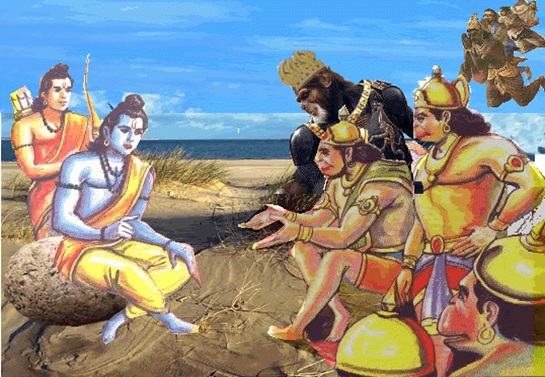
Rama Helps Sugriva To Defeat Vali
During the battle, Sugriva and Vali ( also referred as Bali) fought fiercely, but Vali had the upper hand. To level the playing field, Rama aimed his arrow at Vali when he was engaged in combat with Sugriva. Rama’s intention was not to kill but to enforce justice and uphold dharma.
The arrow struck Vali, piercing his chest. In his final moments, Bali questioned Rama’s actions, and Rama explained that he was compelled to intervene due to Bali’s unjust actions and violation of dharma, including usurping Sugriva’s kingdom and mistreating him.
After Vali’s death, Sugriva regained his kingdom and expressed gratitude to Rama for restoring justice. Rama’s role in the Vali-Sugriva conflict underscores the ethical complexities of leadership and the imperative of upholding dharma, themes central to the moral fabric of the Ramayana.
Vali And Sugriva Battle

Hanuman’s First Encounter With Lord Rama:
Hanuman’s first encounter with Lord Rama is a pivotal moment in the epic Ramayana, steeped in profound significance and divine intervention. It occurred when Lord Rama, accompanied by his brother Lakshmana and the sage Vishwamitra, arrived at the hermitage of Rishi Vishwamitra during their journey to Janakpuri for Sita’s swayamvara (royal wedding). At the hermitage, Hanuman was serving his mentor, the mighty sage Sugriva, who had taken refuge there.
As Lord Rama and Lakshmana entered the hermitage, Hanuman was immediately drawn to their divine aura and unparalleled radiance. Overwhelmed by a sense of reverence and devotion, Hanuman approached them with humility and reverence. Vishwamitra then introduced Hanuman to Lord Rama, narrating his illustrious lineage and extraordinary capabilities.
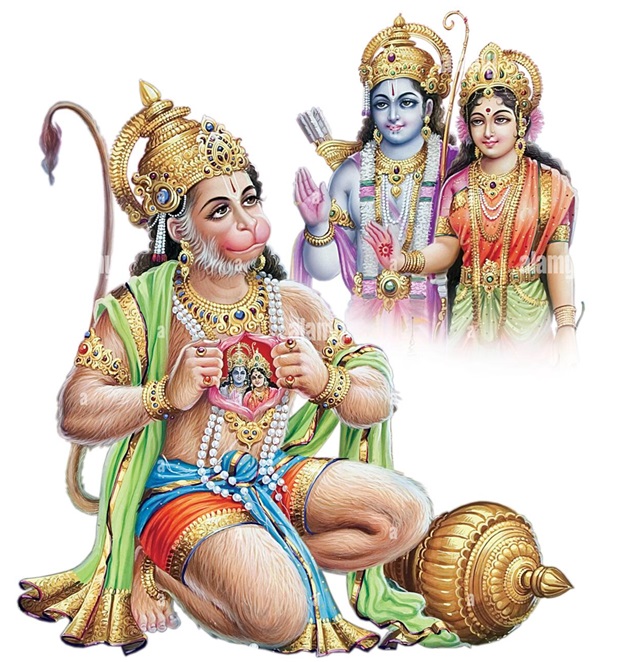
Meeting of Two Divine Souls :
Lord Rama, recognizing Hanuman’s innate devotion and unwavering loyalty, bestowed his blessings upon him, forging a profound bond that would endure through trials and tribulations. This auspicious meeting marked the beginning of Hanuman’s unwavering devotion to Lord Rama and his unwavering commitment to serve him in his divine mission to rescue Sita and vanquish the demon king Ravana.
Thus, the encounter between Hanuman and Lord Rama symbolizes the meeting of two divine souls destined to embark on a journey of righteousness, courage, and devotion, leaving an indelible mark on the fabric of the epic Ramayana and inspiring generations with their exemplary virtues and divine connection.
Alliance with Sugriva:
Rama befriends Sugriva, the monkey king, and helps him regain his kingdom from his brother Vali. In return, Sugriva pledges his help in finding Sita.
Hanuman’s Journey to Lanka:
Hanuman, a devoted vanara (monkey) warrior, leaps across the ocean to Lanka in search of Sita. He discovers Sita in Ashoka Vatika, surrounded by demonesses, and reassures her.
Rama Setu Bridge Was Engineering Marval
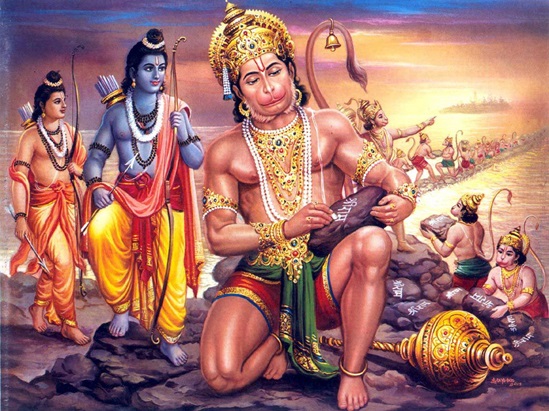
Hanuman’s Search For Sita:
Hanuman’s search for Sita is a heroic and pivotal episode in the Ramayana. Entrusted by Lord Rama, Hanuman embarks on a perilous mission to locate Sita, who is held captive in Lanka by the demon king Ravana.
With unmatched strength and the ability to change his size at will, Hanuman makes a colossal leap across the ocean to reach Lanka. Upon arrival, he discovers Sita in Ashoka Vatika, Ravana’s garden, where she awaits Rama’s rescue.
Hanuman Locates Sita In Ashoka Vatika In Lanka
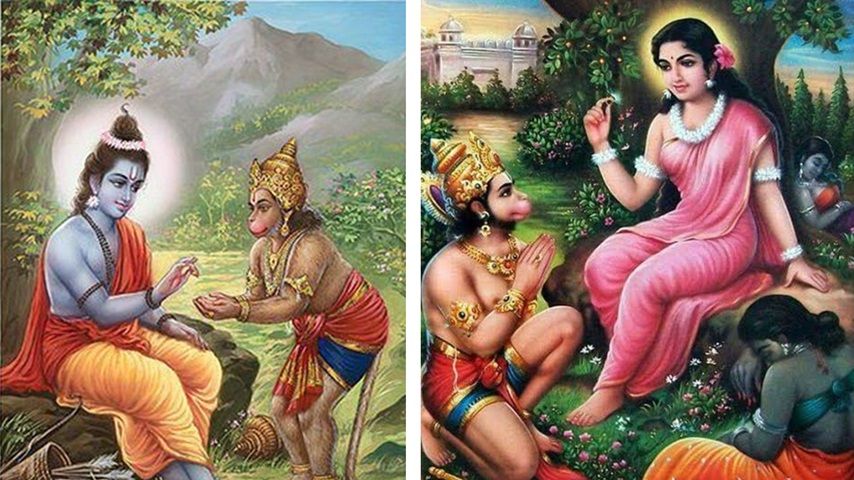
Hanuman reassures Sita, presents Rama’s ring as a token of authenticity, and conveys a message of hope. Despite facing numerous challenges, including encounters with powerful demons, Hanuman’s unwavering devotion and daring exploits in Lanka serve as a testament to his loyalty to Rama.
His successful return to Rama with crucial information becomes a turning point, setting the stage for the eventual confrontation with Ravana and the rescue of Sita.
Complete Ramayana Story Events
Hanuman Burning of Lanka:
Hanuman burns a part of Lanka with his fiery tail as a warning to Ravana. Ravana dismisses Hanuman’s warning, and the burning tail becomes a catalyst for future events.
Hanuman Ignites Ravana's Lanka
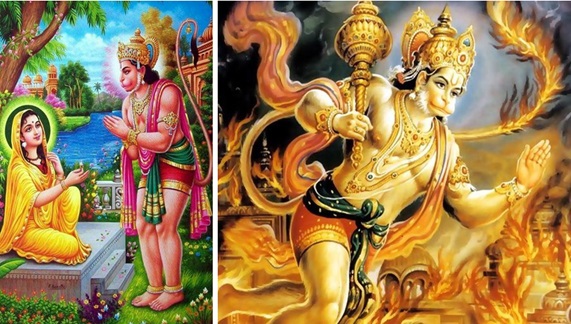
Hanuman Returns With Crucial Information:
Hanuman returns to Rama with crucial information about Sita’s whereabouts and the strength of Ravana’s forces. His deeds and unwavering commitment forge a profound alliance between Rama and the Vanaras, setting the stage for the eventual battle against Ravana and the rescue of Sita.
Hanuman And Vanar Sena Builds Ram Setu:
Lord Rama needed to build the Ram Setu bridge to overcome the geographical obstacle of the vast ocean and reach Lanka, where his abducted wife Sita was held captive by the demon king Ravana.
After Hanuman’s successful reconnaissance mission and the location of Sita being confirmed, Rama, along with the Vanara army, faced the challenge of crossing the ocean to confront Ravana and rescue Sita.
Vanarsena Builds Setu (Bridge) To Lanka
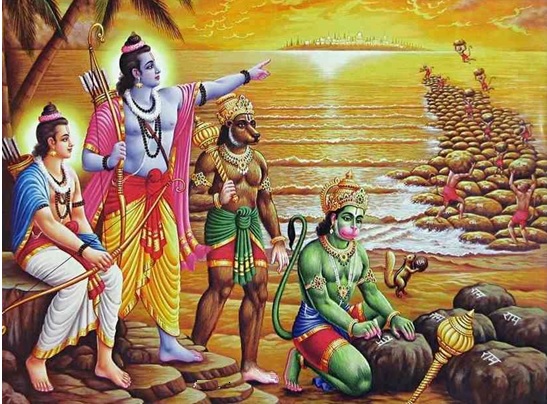
To address this, Rama decided to construct a bridge, known as the Ram Setu, to connect the southern tip of India (Rameswaram) to the island of Lanka. The construction of the bridge became a monumental task undertaken with the help of Hanuman, other Vanaras, and divine beings.
8. Rama's Final Battle With Ravana
Battle at Lanka:
The mighty battle commences between Rama’s forces and Ravana’s demon army. Notable warriors from Ravana’s forces include Ravana, Kumbhakarna, Indrajit, and Rama’s forces include Rama , Lakshmana and Hanuman.
Lakshmana’s Injury and Sanjeevani Herb:
Lakshmana is gravely injured in battle. Hanuman brings the Sanjeevani herb from the Himalayas to revive Lakshmana.
During the battle between Lord Rama’s army and Ravana’s forces, Lakshmana, Rama’s devoted brother, was severely wounded. To save him, Hanuman flew to the Himalayas to fetch the life-saving Sanjeevani herb. In his haste, Hanuman carried the entire mountain on which the herb grew.
The timely arrival of the herb healed Lakshmana, demonstrating Hanuman’s unwavering devotion and the potency of Sanjeevani in Hindu mythology. This episode symbolizes loyalty, sacrifice, and the power of divine remedies in the Ramayana.
Hanuman Brings Mountain With Sanjeevani Buti
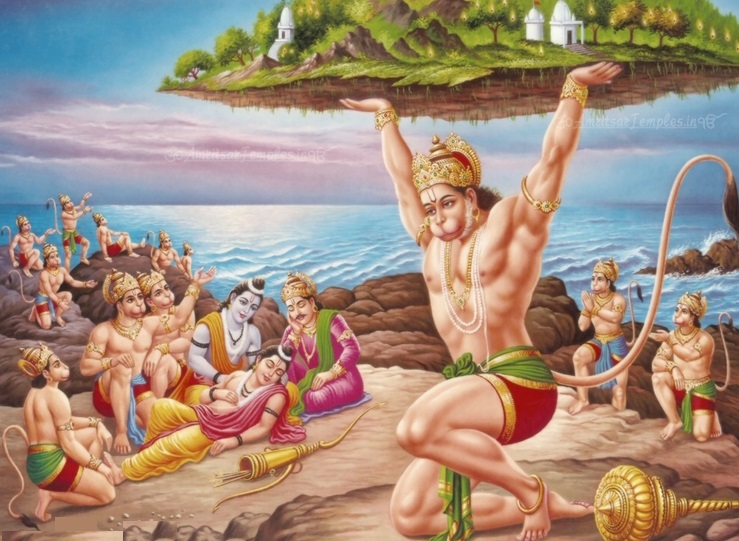
Complete Ramayana Story Events
9. Rama Kills Ravana
Ravana’s Defeat:
Rama, guided by Vibhishana, learns about Ravana’s vulnerable spot and defeats him in a fierce battle. Rama’s victory is celebrated by the gods, and Vibhishana is crowned as the king of Lanka.
Rama Fights Final Battle With Ravana
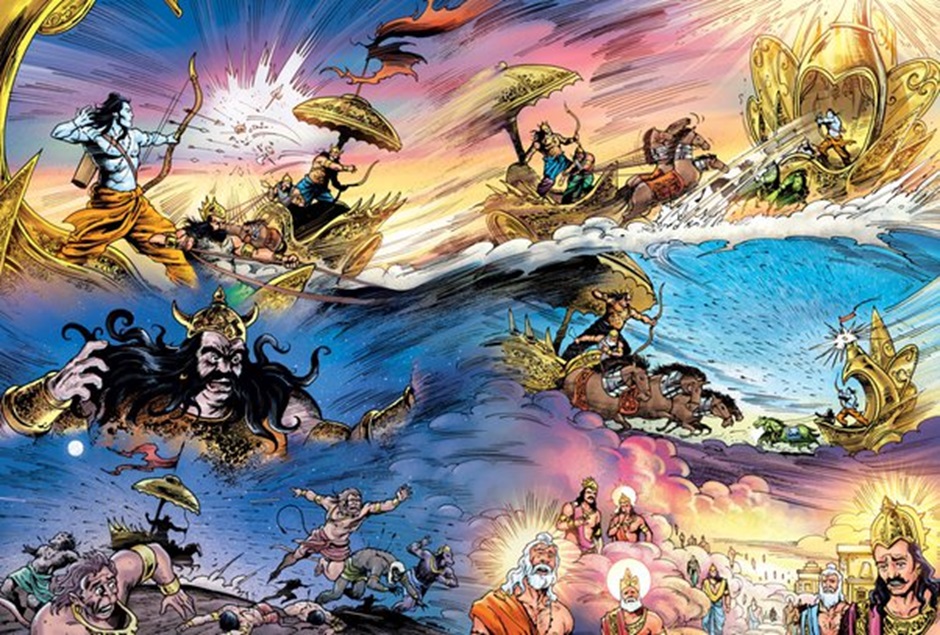
Lord Rama defeated and killed Ravana in a dramatic and decisive battle in the Ramayana. Guided by divine purpose, Rama, along with his loyal Vanara army, confronted Ravana and his forces in Lanka. The battle raged fiercely, with both sides displaying valor and skill.
In the final confrontation, Rama engaged Ravana in a fierce duel. Rama’s mastery of divine weapons, particularly the Brahmastra, proved instrumental. However, Ravana, with his immense strength, countered Rama’s attacks. Observing a moment of vulnerability, Rama, advised by Vibhishana, aimed a powerful arrow at Ravana’s navel, a spot where he was vulnerable due to a divine boon.
Struck fatally, Ravana fell in battle, succumbing to Rama’s superior prowess. Rama’s victory not only symbolized the triumph of dharma over adharma but also served as a testament to righteousness, divine intervention, and the eventual rescue of Sita from captivity.
Rama's Final Battle With Demon King Ravana
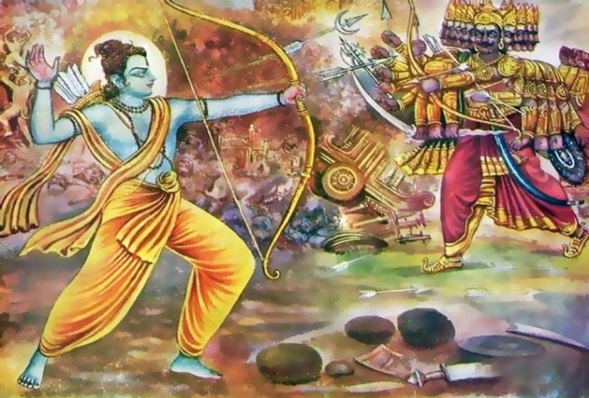
Complete Ramayana Story Events
10. Rama's Return To Ayodhya
Rama’s reunion with Sita marks the end of their exile. However, doubts about Sita’s purity arise among the citizens of Ayodhya, leading to her second banishment. Sita seeks refuge in the forest, where she gives birth to twin sons, Lava and Kusha, under the care of sage Valmiki.
The narrative takes a poignant turn when Rama, conducting the Ashvamedha Yajna, is reunited with his sons. Yet, due to societal doubts, Rama asks Sita to undergo another test of purity.
Rama Returns And People Of Ayodhya Celebrates
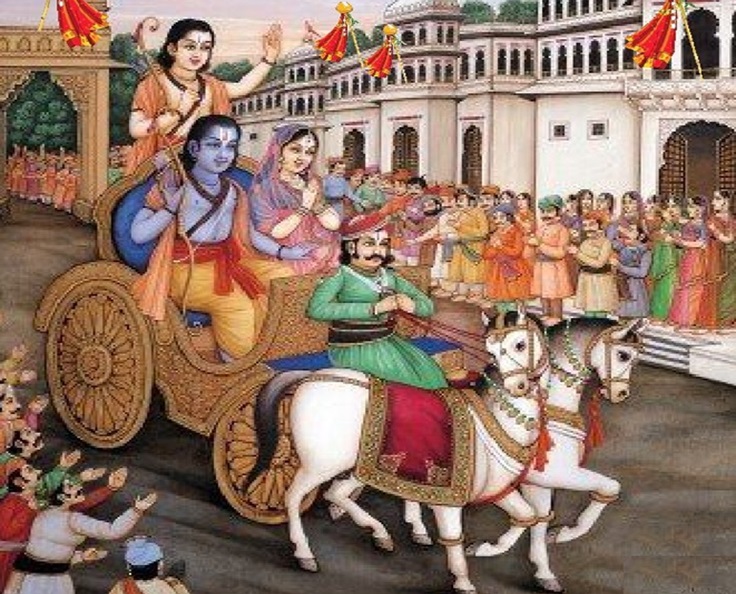
Rama's Coronation Ceremony As King Of Ayodhya
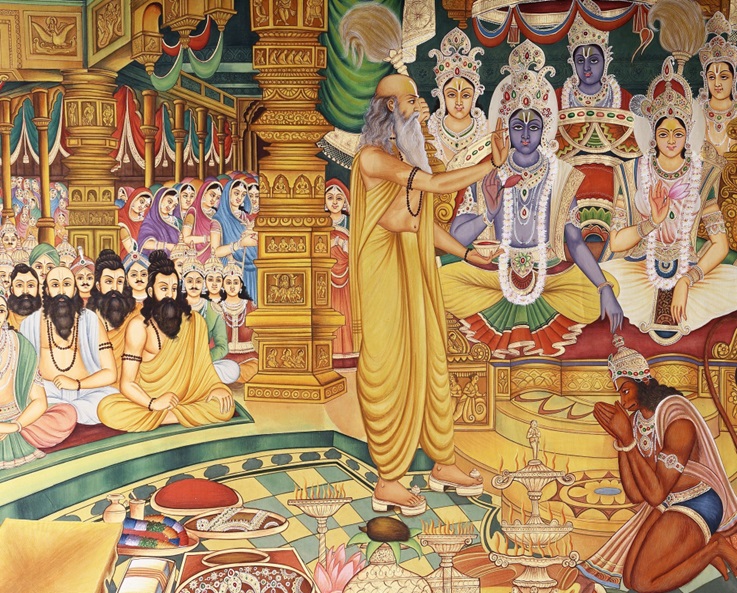
11. Sita's Agni Pariksha And Reunion
Sita’s Agni Pariksha, or the trial by fire, is a crucial episode in the Ramayana. After being rescued from Lanka, doubts about Sita’s purity arose among the citizens of Ayodhya. To dispel any suspicions and uphold her virtue, Sita voluntarily underwent the Agni Pariksha.
In a sacrificial fire, Sita invoked Agni, the fire god, to bear witness to her chastity and purity. As she walked through the flames unscathed, her purity was affirmed. Despite this, societal doubts persisted, leading Rama to make the agonizing decision to separate from Sita to uphold his duty as a king and maintain the moral integrity of the kingdom.
Sita’s Agni Pariksha is a complex and poignant moment, showcasing her unwavering virtue while highlighting the challenges faced by women in the societal norms of that era.
Sita's Agni Pariksha
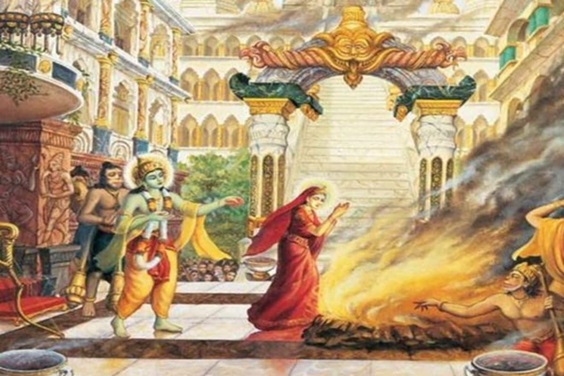
Lord Rama asked Sita to undergo the Agni Pariksha, or purity test by fire, to address doubts raised by the citizens of Ayodhya regarding Sita’s chastity during her captivity in Lanka. Despite Sita’s unwavering devotion and virtue, societal suspicions persisted.
Rama, torn between duty as a king and love for Sita, sought to dispel any lingering doubts through this trial by fire. The Agni Pariksha, while affirming Sita’s purity, unfortunately led to their separation as Rama had to make a difficult decision guided by the expectations of his subjects.
Complete Ramayana Story
12. Rama's Coronation As King Of Ayodhya
The coronation ceremony of Lord Rama as the king of Ayodhya is a pivotal and joyous event in the Ramayana. After fulfilling his exile and victorious return to Ayodhya, Rama’s coronation is a momentous occasion marked by grandeur and celebration.
Coronation Of Rama
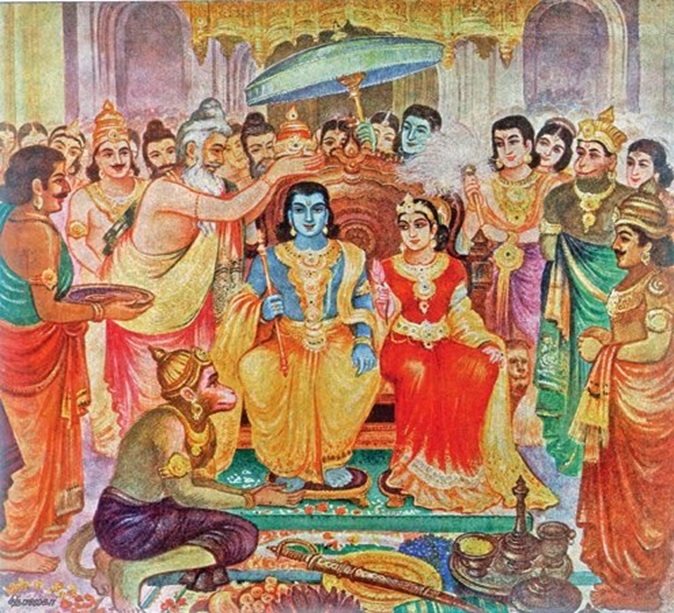
Rama Coronated As King Of Ayodhya
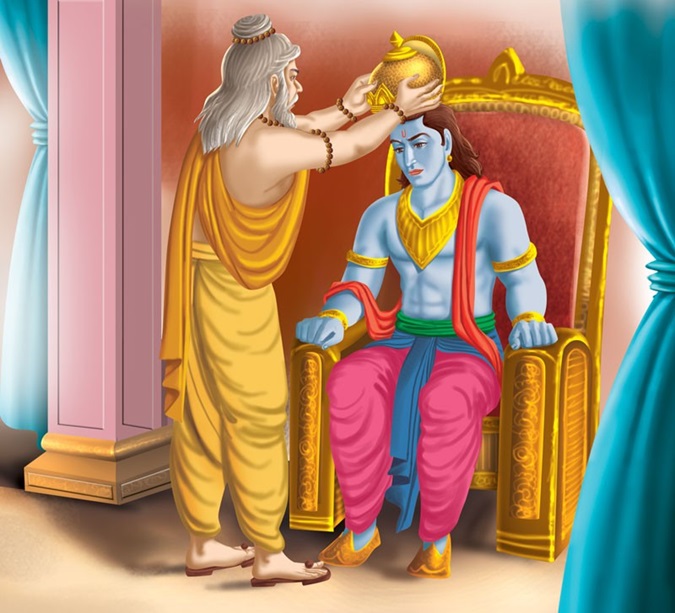
Rama, along with his devoted wife Sita, loyal brother Lakshmana, and the Vanara army, returns to Ayodhya after successfully completing his exile.
The citizens of Ayodhya, overjoyed by Rama’s return, celebrate his arrival with enthusiasm and festivity. This was the first Diwali. The entire city is adorned to welcome the beloved prince. This event is still widely celebrated as “Diwali” or festival of lights in India.
Coronation Of Lord Rama
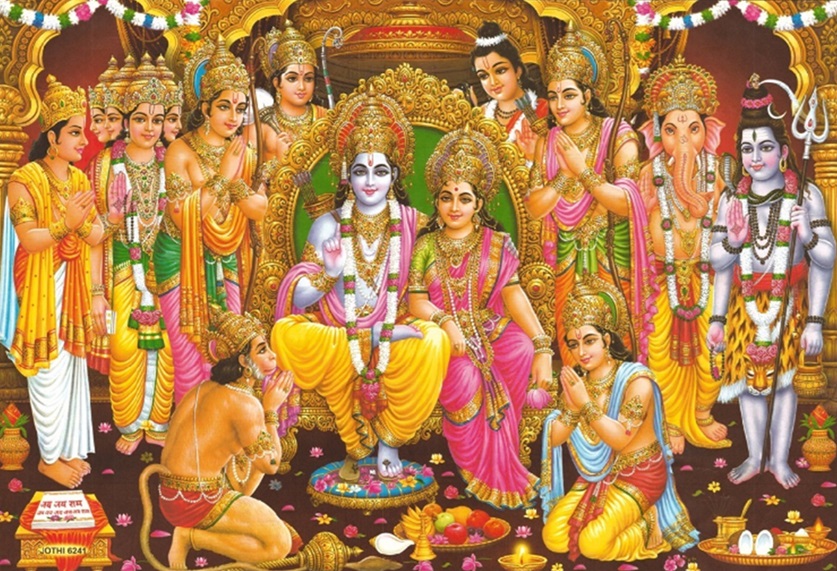
Rama’s coronation symbolizes the unity and prosperity of Ayodhya. His rule is anticipated to bring an era of righteousness, justice, and harmony to the kingdom. The coronation marks the culmination of Rama’s exile and the fulfilment of his destiny.
Rama’s coronation is a significant moment that reflects the triumph of dharma, righteousness, and the establishment of a just and prosperous rule in Ayodhya.
Sita's Banishment
Sita’s second banishment in the Ramayana occurs when Lord Rama, now the king of Ayodhya, succumbs to public opinion and societal doubts about Sita’s purity. Despite her earlier Agni Pariksha proving her chastity, Rama, bound by his duty as a king, decides to banish Sita to the forest.
This decision is influenced by the concerns of his subjects and to uphold the perceived moral standards of the kingdom. Sita, pregnant with Rama’s twins, faces immense hardship as she is abandoned in the forest. The second banishment is a tragic episode highlighting the complexities of duty, societal expectations, and the sacrifices endured by Sita in the face of unwarranted suspicions.
Birth of Lava and Kusha
The birth of Lava and Kusha is another significant event in the Ramayana. Sita, banished to the forest by Lord Rama due to societal doubts, seeks refuge in the hermitage of sage Valmiki.
There, she gives birth to twins, Lava and Kusha, who are nurtured by Valmiki. The sage raises them in an atmosphere of wisdom and virtue, teaching them the epic of Ramayana.
Mother Sita With Lava and Kusha
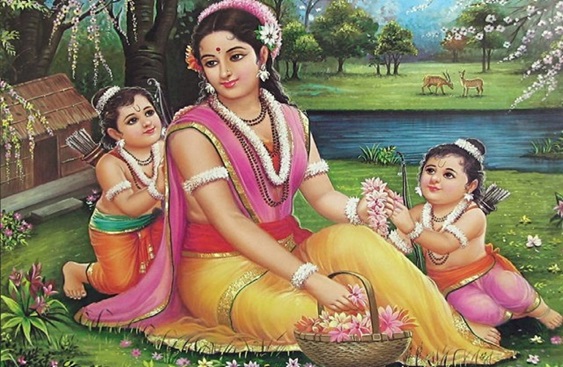
Lava and Kusha, skilled in archery and endowed with divine qualities, grow up unaware of their royal lineage. The brothers eventually cross paths with Rama during the Ashwamedha Yajna.
The reunion leads to the revelation of their true identity, and they are joyously embraced by their father, Rama. The birth and upbringing of Lava and Kusha add layers of complexity to the Ramayana, weaving together themes of separation, destiny, and familial bonds.
Sita With Luv And Kush , In Sage Valmiki Ashram
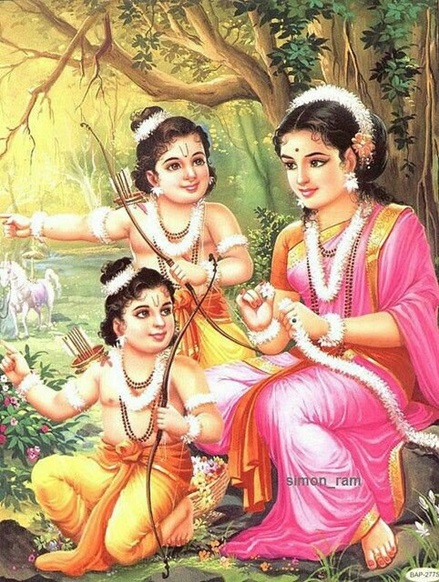
Luv And Kush Undergoing Training By Sage Valmiki
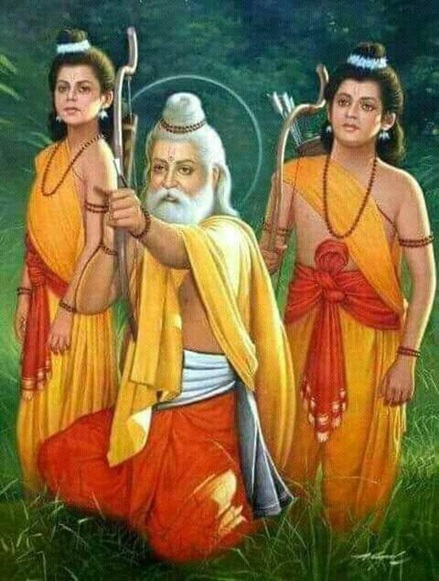
Complete Ramayana Story
Ashvamedha Yajna
In the Ramayana, King Rama performs the Ashvamedha Yajna to establish his authority and ensure Ayodhya’s prosperity. The sacrificial horse, symbolizing sovereignty, roams freely. Lava and Kusha, Rama’s sons raised in sage Valmiki’s hermitage, capture the horse.
This act leads to a confrontation with Rama in Ayodhya. The brothers, unaware of their lineage, narrate the Ramayana. Rama, moved by their recitation, acknowledges them. The Ashvamedha Yajna becomes a poignant family reunion, emphasizing destiny and the enduring legacy of the Ramayana.
Lava And Kusha Capture Ashvamedha Yajna Horse
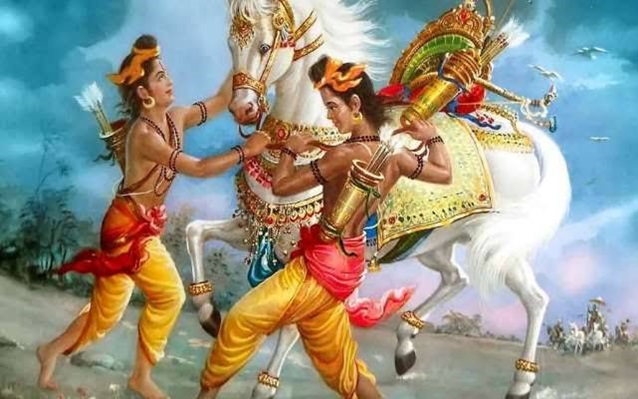
Lava and Kusha, unaware of their royal lineage, capture the wandering horse. This act leads to a confrontation with Lord Rama in Ayodhya. During the ensuing events, the brothers recite the Ramayana, revealing their identity as Rama’s sons. The emotional revelation deeply moves Rama.
The Ashvamedha Yajna, initially intended for political and dynastic purposes, transforms into a poignant family reunion. Rama acknowledges his sons, and the saga of the Ramayana narrated by Lava and Kusha becomes an integral part of the epic. This episode underscores the themes of destiny, familial ties, and the enduring legacy of the Ramayana in the context of the Ashvamedha Yajna.
Rama And Sita Reunion In Ramayana
The final reunion of Lord Rama and Sita in the Ramayana is both poignant and tragic. After Sita’s banishment and her stay in the hermitage of sage Valmiki, she raises her twin sons, Lava and Kusha, away from the knowledge of their royal lineage. Years later, during the Ashwamedha Yajna conducted by Rama, Lava and Kusha recite the Ramayana in the royal court.
Lava and Kusha Singing Ramayana
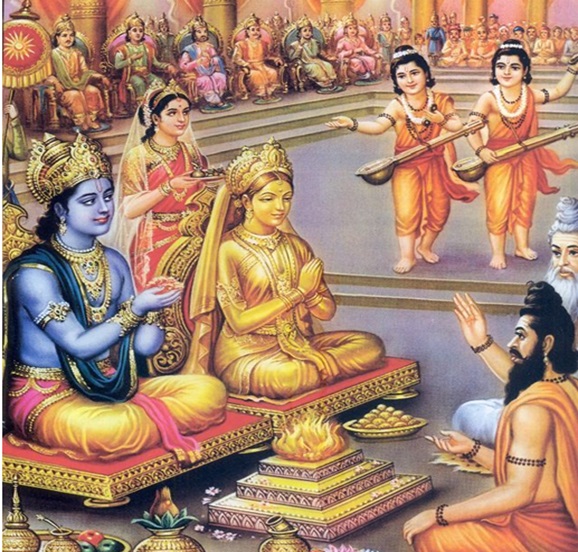
As the boys narrate the tale, Rama realizes the true identity of Sita, who had been living in seclusion. Sita, feeling the need to prove her purity once again, seeks refuge in the earth, her mother, and disappears from the mortal realm. Rama, devastated by the loss, is reunited with Sita in the divine realm, where they are freed from the mortal coils and united for eternity.
The final reunion is bittersweet, emphasizing the challenges faced by the divine couple due to societal expectations and underlining the theme of sacrifice and duty prevalent throughout the Ramayana.
Lava and Kusha Meets Father Rama
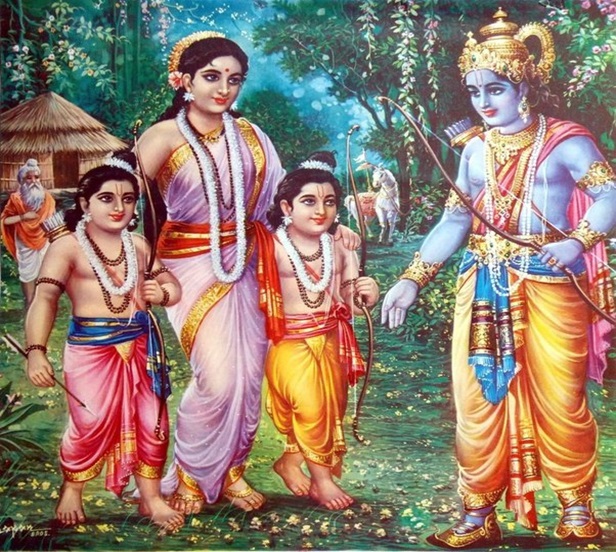
Complete Ramayana Story
End Of Ramayana
Sita's And Rama's Departure
Sita, proving her innocence once again, returns to the earth in a symbolic departure. The Ramayana concludes with Rama’s coronation as the king of Ayodhya and his subsequent transcendence into his celestial form, Lord Vishnu.
Throughout the epic, the Ramayana imparts timeless lessons on duty, loyalty, sacrifice, and the triumph of righteousness. Rama’s unwavering commitment to dharma, Hanuman’s devotion, and Sita’s resilience continue to inspire generations, making the Ramayana a revered scripture that transcends time and cultural boundaries.
Sita's Departure
Sita's Bhumi Samadhi
Sita’s final departure, often referred to as her return to Mother Earth (Bhumi Samadhi), occurs in the Ramayana. Lord Rama, influenced by societal doubts, asks Sita to undergo the Agni Pariksha. Even after taking Agni Pariksha, Rama was constrained by his duty and sent her for banishment.
After fulfilling all her duties and obligations as a mother of Lord Ram’s two children and wife, Sita realises that her divine purpose is over and requests that mother Earth take her back.
Throughout the epic, the Ramayana imparts timeless lessons on duty, loyalty, sacrifice, and the triumph of righteousness. Rama’s unwavering commitment to dharma, Hanuman’s devotion, and Sita’s resilience continue to inspire generations, making the Ramayana a revered scripture that transcends time and cultural boundaries.
Sita Returns To Earth
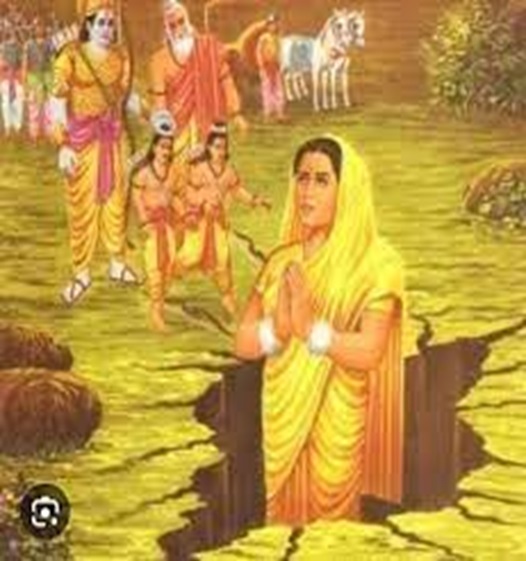
Sita's Bhumi Samadhi
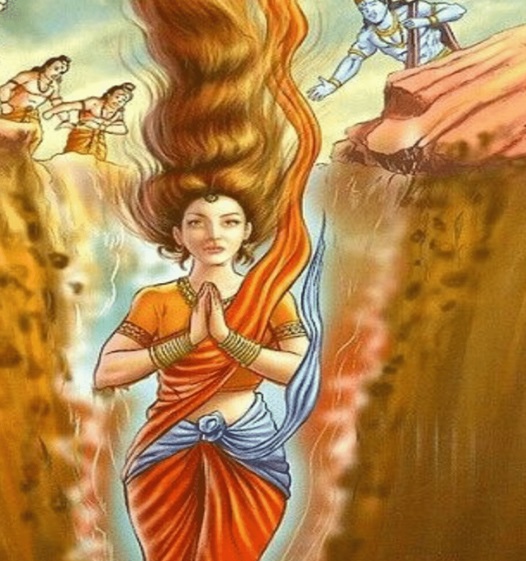
In despair, Sita appeals to her mother, Bhumi Devi, to take her back. The earth goddess responds, and a cleft in the ground emerges. Sita willingly enters the cleft, returning to her maternal origin.
This poignant moment symbolizes Sita’s purity and her voluntary return to the earth, marking the end of her earthly journey and the reunion with her divine essence.
Ram's Departure
The term “Jal Samadhi” refers to Lord Rama’s symbolic immersion into the Sarayu River at the end of his earthly sojourn in the Ramayana. After completing his role as an ideal king and establishing dharma in Ayodhya, Lord Rama decides to return to his divine abode.
As he steps into the Sarayu, the river goddess Ganga emerges to carry them to the heavenly realms. This act of Jal Samadhi is a powerful and symbolic departure, marking the end of Lord Rama’s avatar and his return to the celestial sphere. It signifies the transcendence of mortal existence and the reunion with the divine essence.
Rama Returns To Vishnu Avatar
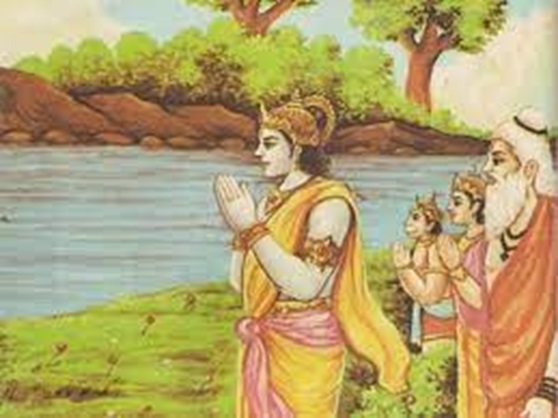
Rama's Jal Samadhi In Sarayu
Lord Rama’s final departure, known as “Rama Pattabhishek” or “Rama’s Return to His Divine Abode,” is a poignant moment in the Ramayana. Following his reign as a righteous king, Rama, along with his brothers and loyal allies, returns to his celestial abode, Vaikuntha.
Understanding his divine origin, Rama symbolically leaves his mortal form in the Sarayu River. The event signifies the completion of Rama’s earthly duties and exemplifies the transient nature of worldly existence.
The people of Ayodhya, deeply moved, witness his divine ascent, marking the end of Rama’s avatar and the return to his divine realm.
Rama’s Coronation as Vishnu:
Rama, after ruling Ayodhya, learns about his divine purpose. He returns to his celestial form as Lord Vishnu, leaving his mortal body.
End of Rama’s Avatar:
Rama’s departure marks the end of his avatar on Earth. His teachings, virtues, and the ideals of dharma continue to inspire generations.
This comprehensive summary captures the essential events of the Ramayana, illustrating the epic’s rich narrative, characters, and the enduring values it imparts.
Complete Ramayana Story Events
The most important lesson from the Ramayana is the timeless value of dharma, righteousness, and duty. The epic emphasizes the unwavering commitment of Lord Rama to uphold moral principles even in the face of adversity.
Rama’s adherence to dharma, be it in his exile, the rescue of Sita, or the battle against Ravana, serves as a guiding light for ethical conduct. The Ramayana teaches that one’s duty, integrity, and moral character should not waver in the face of personal challenges or temptations.
It inspires individuals to navigate life with virtue, empathy, and selflessness, fostering a society based on righteousness and justice.
